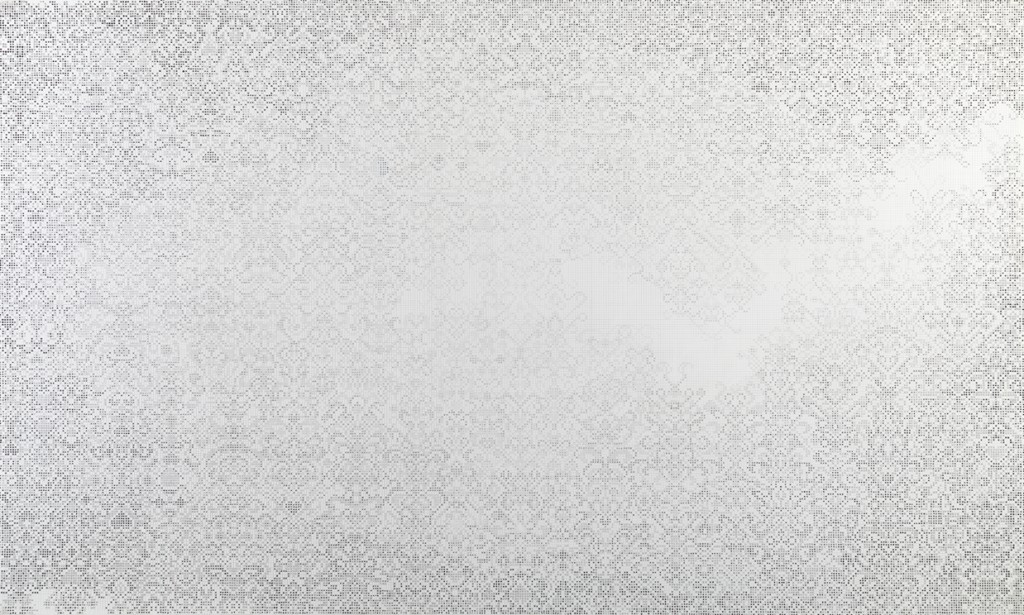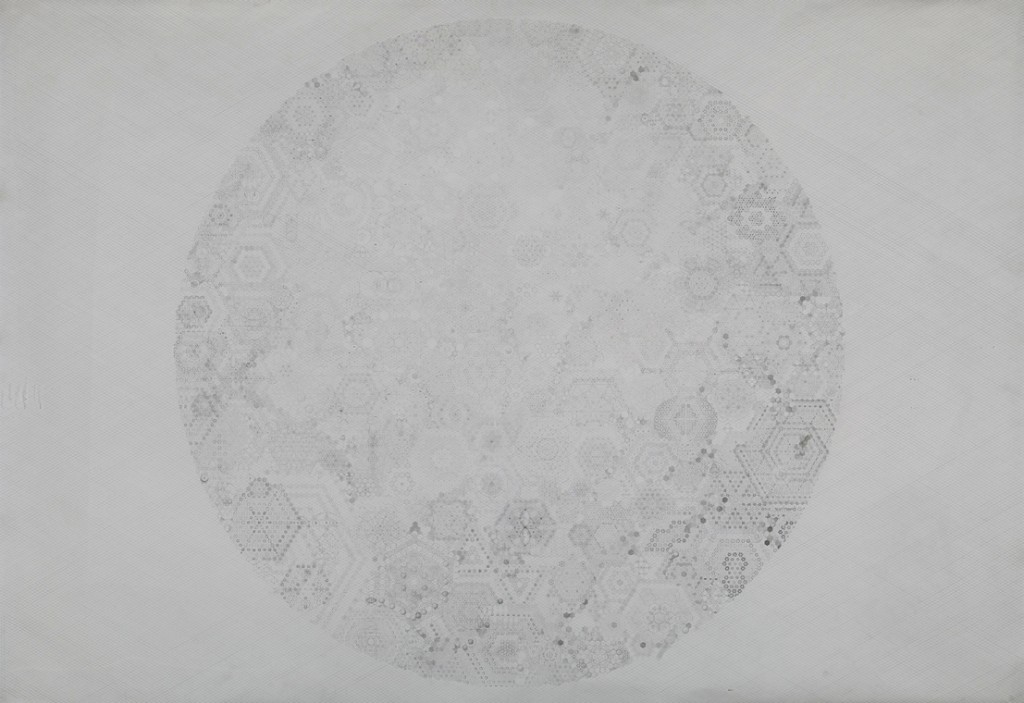THE VEIL
THE EYE
Text by Jacqueline Doughty…
The notion of windows onto another reality appears often in Belle Bassin’s work, and so when viewing the delicate network of pencil lines in her recent drawing Vesica Pisces one immediately thinks of the tracery of a stained glass window, particularly the circular rose windows commonly seen in Gothic cathedrals, although in Bassin’s drawing the window has been bleached of colour and taken back to its bare bones. These medieval Christian structures developed directly from the round oculus windows present in classical architecture, most famously in the dome of the Pantheon in Rome, and the main function of these apertures was to draw worshippers’ eyes upwards to encourage contemplation of spiritual matters beyond the visible world.
The oculus, or eye, may seem an unlikely symbol to choose as a portal to the divine, as the act of looking is the foundation of empirical science and in our secular age it is not thought to be rational to believe what cannot be observed. It is curious, then, that spirituality has always found such a strong expression in visual representation, and that the practice we know today as visual art evolved from ancient cultures’ attempts to illustrate the ethereal realms of religion and mysticism – it reveals a stubborn inclination in human nature to embody the immaterial, and to set eyes on what remains invisible.
Belle Bassin’s drawings hinge on a similar contrast between reason and intuition; on what can be seen and what cannot. The rational organising principles she implements when she begins a drawing provide a framework for imagery generated by the irrational compulsions of the sub-conscious. The drawing Vesica Pisces begins with logic and order – a grid and a circle – upon which Bassin has then applied patterns in unstructured clusters that contrast with the strict geometry of the grid. The patterns are loosely based upon a hexagonal form known as the ‘flower of life’ – a symbol which has appeared as a decorative element in art and architecture in many cultures throughout history. The possible variations on this 6-lobed form are infinite, allowing for an accumulation of flower-like combinations of circles, squares, triangles and dots, which the artist describes as developing organically as she draws. Although the drawing process is meticulous and time-consuming, it is also meditative, allowing the artist to clear her head and draw without a final image in mind. Upon finishing a drawing session for the day, she is often surprised by what she sees.
This process has a performative, ritual quality that is closely connected to Bassin’s practice of meditation and her self-described “hybrid” belief system, which draws on a number of esoteric disciplines. Bassin’s recent drawings display her interest in consciousness grids, diagrams that derive from sacred geometry and the belief that particular mathematical ratios and proportions can embody the universe and the divine. It is not surprising, then, that her recent drawings bring to mind mandalas, geometric compositions that in Buddhism have a dual function as symbolic maps of the universe and as tools to guide meditation. Paradoxical though it may seem, following the patterns of a mandala with the eyes is thought to assist in focusing the mind beyond the visible world, and thus the mandala acts quite literally as a map or pathway to spiritual enlightenment – a journey that begins visually but ends in realms which cannot be seen or quantified.
There are many cultures and belief systems in which visual schemata employing strict symmetrical organization and geometric forms mediate a transcendental experience that defies rational explanation – from mandalas and consciousness grids, to Navajo sand drawings and the powder diagrams used in Haitian Vodou rituals. This slippage between the logic of mathematical structure and the less chartable territory of spirituality is also present in Belle Bassin’s work, and is what gives her recent drawings their tension – what she describes as a “push and pull” between the discipline of the grid and the spontaneous mark-making through which she develops the patterning. The structural contrasts in her drawings serve as a visualisation of the seemingly contradictory human urge to make order out of chaos, and to harness the ineffable through the organising principles of myth, ritual, and symbol.
© 2025 The Door | rejigged by TIMSON creative


